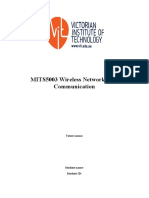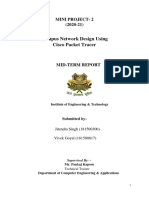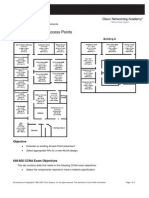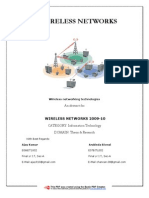0% found this document useful (0 votes)
16 views9 pagesComputer Networking Using Wireless Network
This project explores the design and implementation of wireless computer networking, highlighting its advantages over traditional wired networks, such as mobility and scalability. It examines wireless standards, security considerations, and practical implementation, including a simulated wireless local area network (WLAN) setup. The study concludes that wireless networks, when properly configured, can offer significant benefits in performance and user convenience.
Uploaded by
creator.ogeCopyright
© © All Rights Reserved
We take content rights seriously. If you suspect this is your content, claim it here.
Available Formats
Download as PDF, TXT or read online on Scribd
0% found this document useful (0 votes)
16 views9 pagesComputer Networking Using Wireless Network
This project explores the design and implementation of wireless computer networking, highlighting its advantages over traditional wired networks, such as mobility and scalability. It examines wireless standards, security considerations, and practical implementation, including a simulated wireless local area network (WLAN) setup. The study concludes that wireless networks, when properly configured, can offer significant benefits in performance and user convenience.
Uploaded by
creator.ogeCopyright
© © All Rights Reserved
We take content rights seriously. If you suspect this is your content, claim it here.
Available Formats
Download as PDF, TXT or read online on Scribd
/ 9























































































